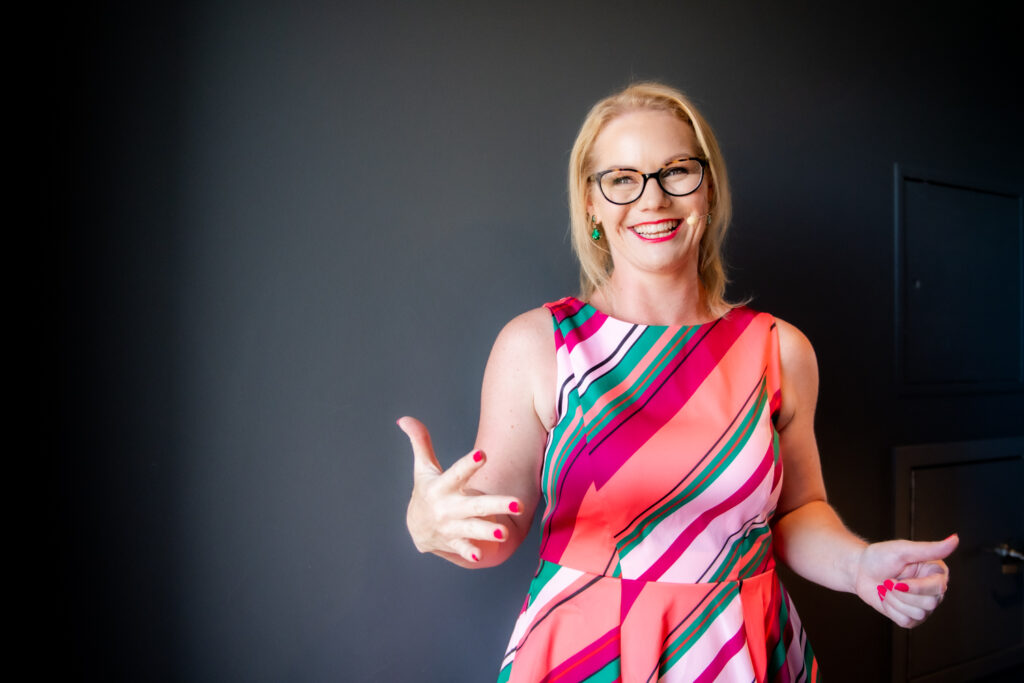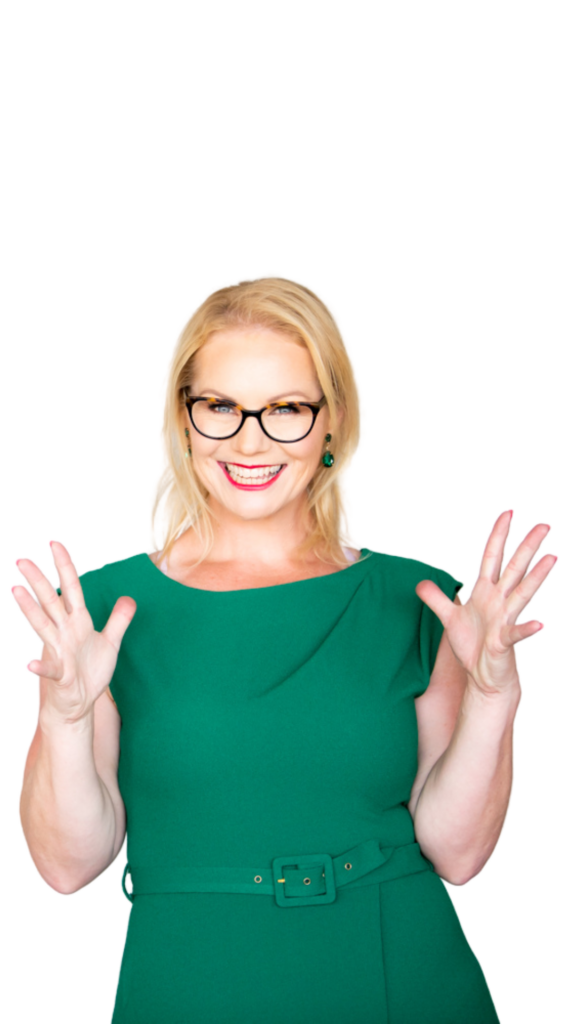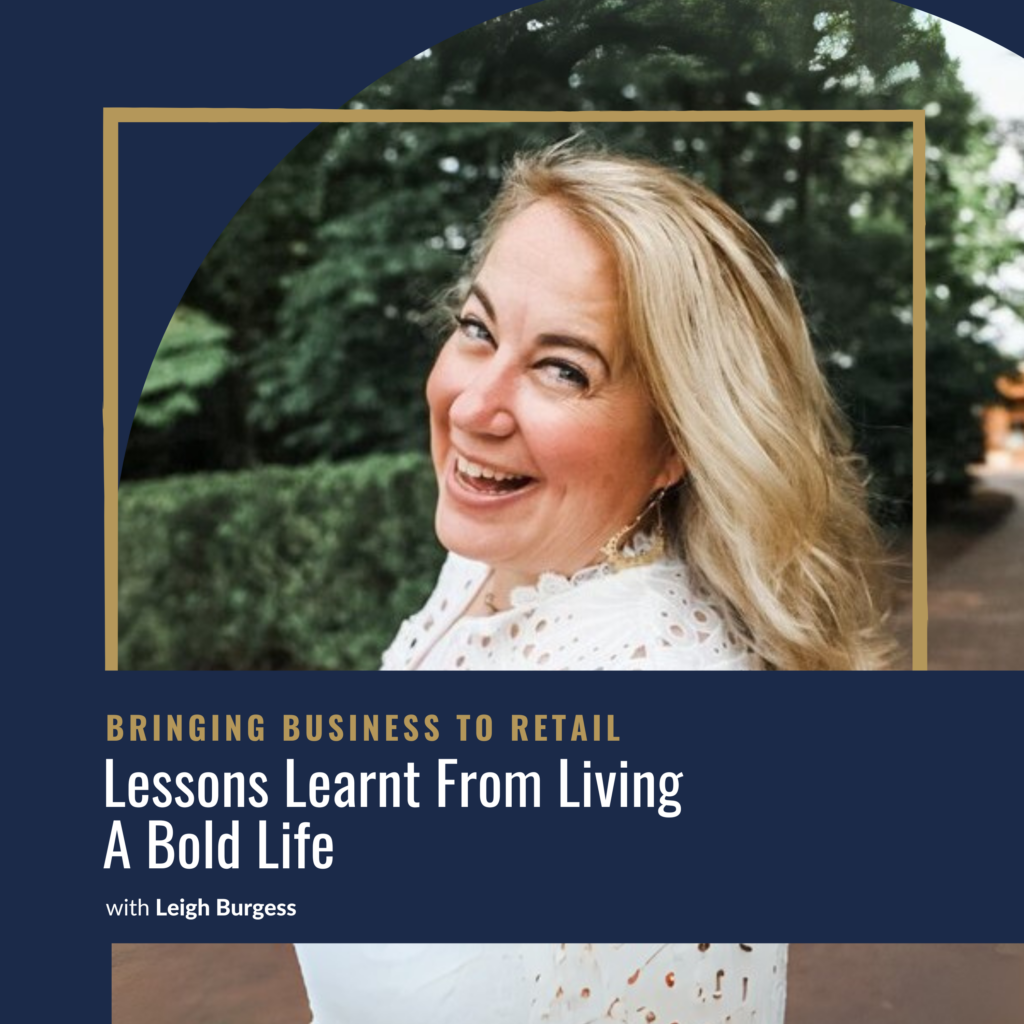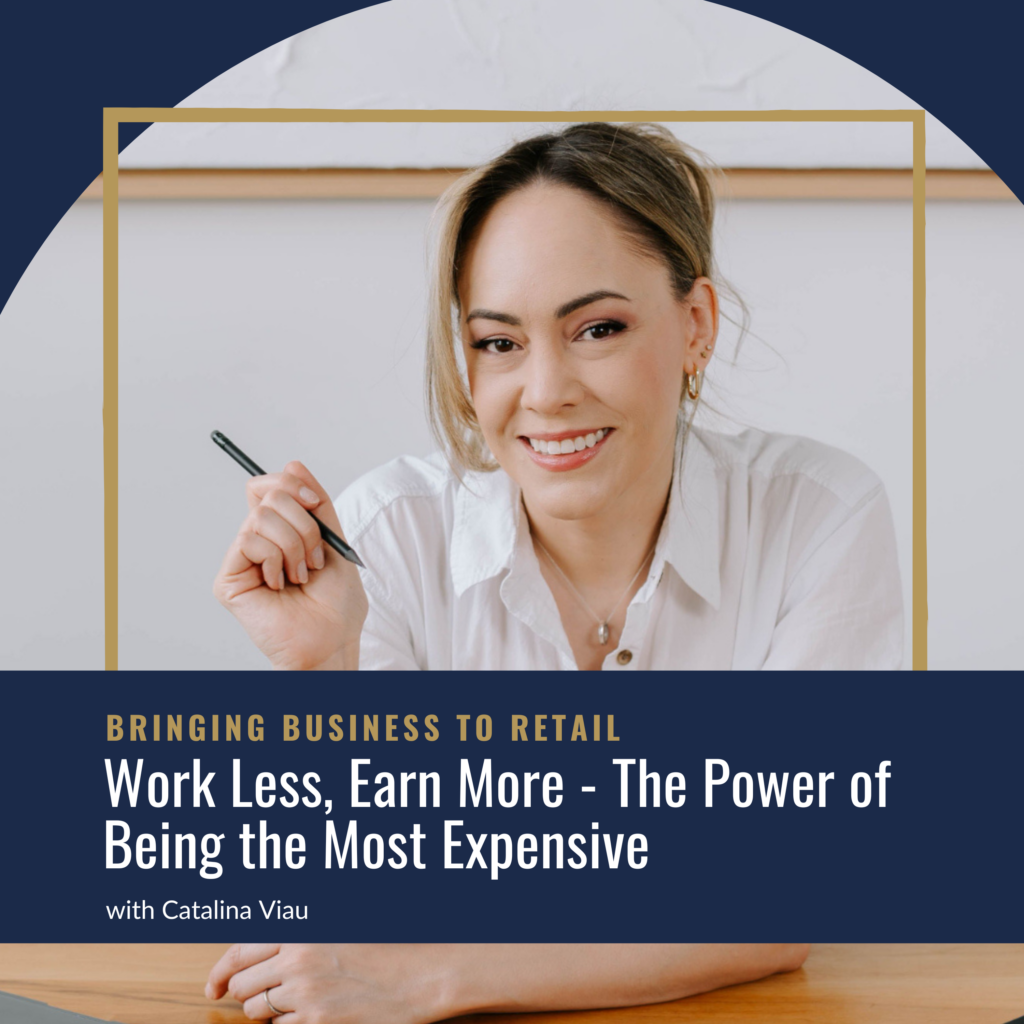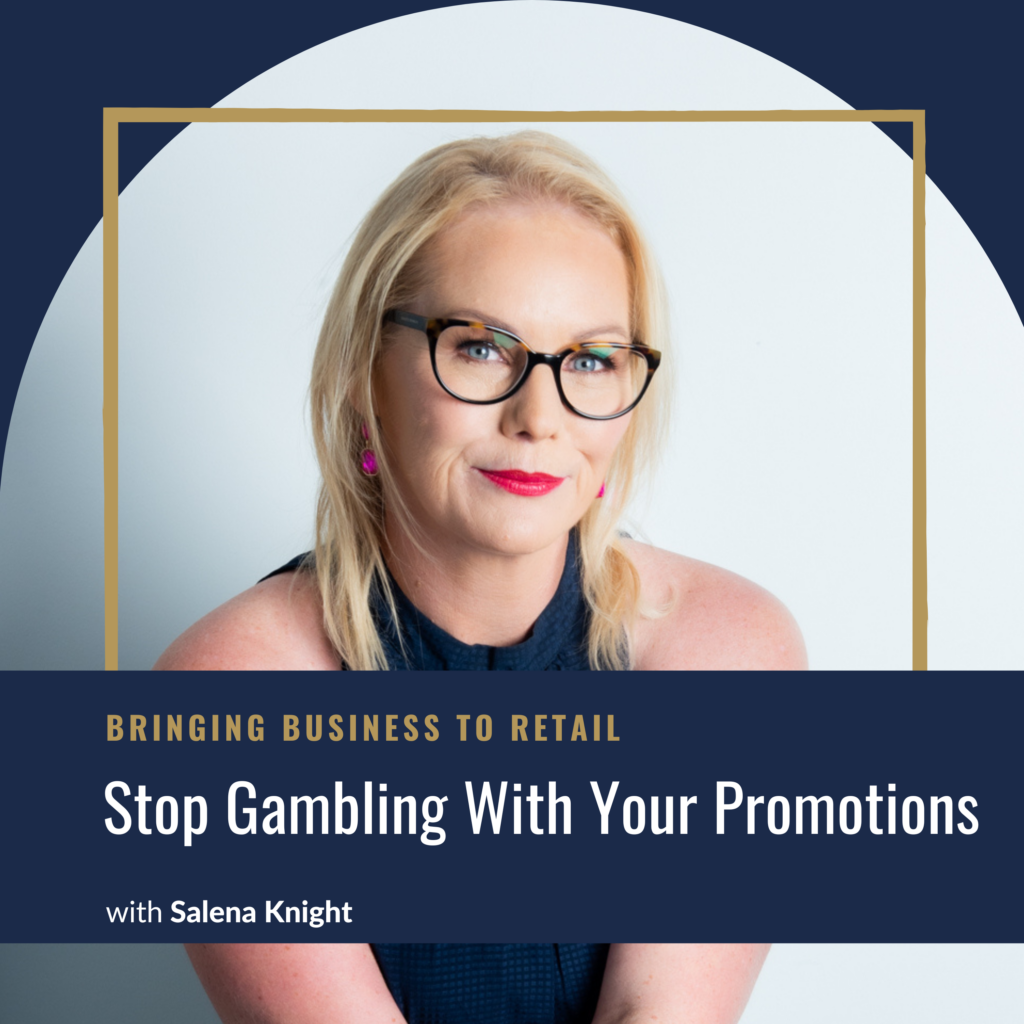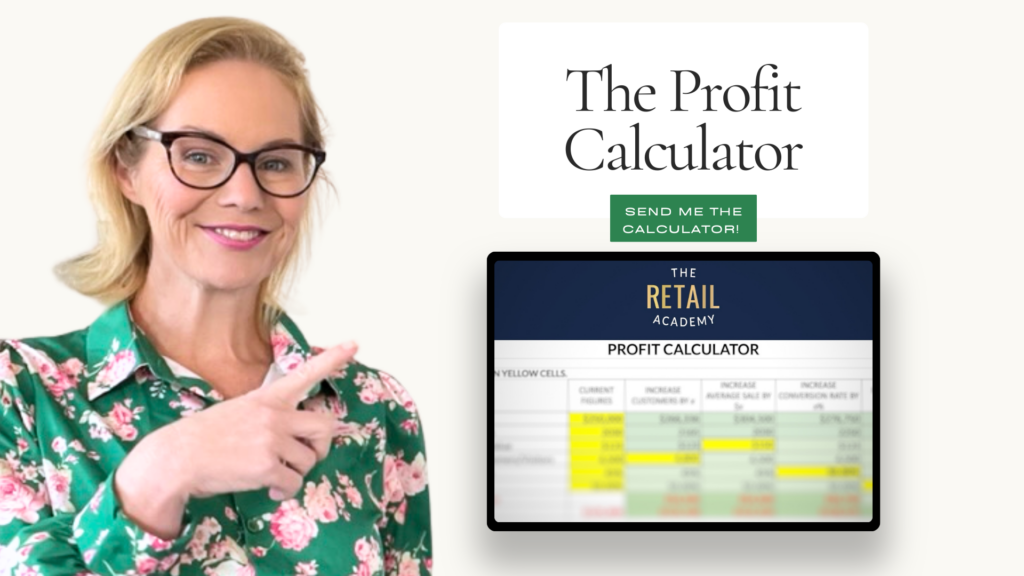
In this episode, we’re tackling what I call The Hamster Wheel of Hope—that frustrating cycle of crossing your fingers and hoping:
🚨 Hoping more customers show up
🚨 Hoping your next sale makes enough to cover the bills
🚨 Hoping your marketing finally works
The truth? Hope isn’t a strategy—but a plan is.
In this episode, you’ll learn:
✅ The real reason you feel stuck (and how to fix it)
✅ How to stop guessing and start making money-smart decisions
✅ The 5 essential steps to building a revenue plan that actually works
✅ Why random sales and social media trends won’t save your business—but these strategies will
This episode is your roadmap to breaking free from the hustle-for-hustle’s-sake cycle and finally building a profitable, sustainable business.
Hit play now and take the first step toward real business growth!
———————————
Breaking Free from the Hamster Wheel of Hope 0:00
Identifying the Hamster Wheel 1:49
Step One: Understanding Your Numbers 3:11
Step Two: Setting Realistic Targets 5:48
Step Three: Understanding Your Customer Journey 9:22
Step Four: Planning Intentional Promotions 10:35
Step Five: Reviewing, Refining, and Repeating 12:29
Conclusion and Call to Action 13:42
LISTEN NOW on The Bringing Business To Retail Podcast
00:00
Hey there, retail and e commerce Store owners, welcome back to the bringing business to retail podcast where we cut through the fluff, the overwhelm and the clutter to help you grow your business with clarity, confidence and control. I'm your host, Selena and I and if you have ever found yourself hustling like crazy trying to keep your business afloat, or you feel like you are running in circles, putting in a whole bunch of effort and not seeing the results that you want. Well, let me start by acknowledging I see you in this episode, we are going to break free from that hustle for hustle sake cycle, and we are tackling a little thing that I have dubbed the hamster wheel of hope. I think we've all gotten our steps up on the hamster wheel of hope over time. It's this exhausting pattern where you are just crossing your fingers and hoping things work out. Now for you, maybe you're running flash sales every week because you realize there just isn't enough money in the bank to pay that supplier invoice yet again. Or perhaps you're jumping on every new marketing trend that you see on Instagram, because what you're trying doesn't seem to be working, or maybe you're sitting on stock that just isn't moving. But instead of clearing it out strategically, you just keep crossing your fingers and hoping that it will sell eventually, and in the process, it is all tying up cash
01:18
. The hamster wheel of hope is crossing your fingers and hoping that enough customers show up, hoping that you will sell enough this week to pay the bills, hoping that your marketing will work, hoping that your team will show up and do what you need them to do. The hamster wheel of hope is exhausting. It's frustrating, and honestly, it's no way to run a business.
01:38
But here's the good news. We are going to talk about how to break free from that cycle and create a sustainable revenue plan that actually works. So let's dive in. First up. Let's identify the hamster wheel, and let's call it what it is. It is running a business on hope instead of strategy. And I know this because I've been there back when I owned my stores, I remember those sleepless nights wondering how I was going to make it all work. I knew that I was putting in more hours than I should be. I was spinning my wheels. I was doing all the things, but somehow it just never felt like I was moving forward. I was equally determined and depressed, like I knew I could do this, but why couldn't I do this, it was like being trapped in quicksand. The harder I worked, the more stuck I felt. And mean girl, Sal Well, she told me that I wasn't cut out for running a business, and clearly I wasn't smart enough. Because if I was, I would be much further along than where I was stuck right now. If I was smart, I would be successful, even though, if you'd asked me back then, I couldn't have actually told you what success was for me. It just wasn't this. And maybe you felt that too. But here's the truth, the problem wasn't me. The problem wasn't that I wasn't smart enough, and it's not you either. The problem is the system that we have built around ourselves, where hustle is glorified and strategy is kind of like an afterthought breaking out of that hamster wheel starts with recognizing that hope won't get you to where you want to go, but a plan will.
03:16
So let's build the plan
03:18
. Step one, you have to get clear on your numbers. The first step in creating a sustainable revenue plan is to get super clear on numbers. And if you don't know your numbers, the truth is, you're just guessing. And my friends, we do not guess when it comes to money.
03:18
Okay, to get off the hamster wheel, you have to get clear on the math, not girl math, not that math that you see on Instagram, but real math. Start by just knowing how much money do you need to cover your expenses. That's your break even point. It's non negotiable. And once you know that number, you can start setting goals based on facts, not on feelings. And from there, you can jump into profit margins and understanding the difference between what is revenue and what is profit. Profit is the money we put in our pocket. Are your prices sustainable? Are you leaving enough room to actually pay yourself? When we have that data, we can finally look at revenue goals and setting really clear targets for the week and the month and the quarter based on the break even point and the profit goals, all of that good stuff that makes or breaks a business. Now I know, I know, trust me, this is the person who failed accounting, not once, but twice at university,
03:38
numbers can be overwhelming, and for me, failing accounting had nothing to do with the fact that I wasn't smart enough, which sounds like an oxymoron, right? Like, well, you failed. You weren't smart enough. It wasn't that at all. It was just that the way they taught it to me didn't work for my. Brain, and once I realized that the numbers on the page were money, it all made sense. It was literally like a light bulb went off. I remember thinking, why did they teach me double journal bookkeeping? Why didn't they teach me money? Because I remember just the clarity when I saw the numbers and realizing it was money in my bank or money I had to pay. Numbers do not have to be overwhelming and scary. Grab a calculator, pour yourself a coffee or a wine. No judgment here, and break it down when you know your numbers, you are no longer making decisions from a place of fear. You're making decisions from a place of power.
05:38
When you know your break even point, it is so much easier to work backwards and figure out what needs to happen in your business to hit your revenue targets. All right, that was step one.
05:51
Step number two. Speaking of targets, I want you to set realistic targets now. Targets are more than numbers than you just pluck out of the air. They are your roadmap to success.
06:04
You need to set targets for yourself and for your team that align with your overall business goals, because without clear targets, you are essentially running your business blind. Targets give us direction. They give us accountability. They give us something to aim for. They are literally a roadmap.
06:27
So start with your own targets. What is your target and how are you going to get there? Remember, this is your roadmap. Okay, once we've done that, I want you to set team targets, even if these are casual people or freelancers or virtual assistants, or it doesn't matter if anybody is working in your business or on your business, they need to have targets. So this might include something like increasing sales conversion rates. So you might go to your team and say, Hey, I've looked at the numbers, and at the moment in store, we're converting at 45% we need to get that up. We need to have our conversion rates at 60% now we can work out what we have to do to get them from 45 to 60 maybe we need to do a little bit of sales training. Maybe we just have a poor performer who shouldn't be there. So once you see how we reverse engineering, maybe you might want to reduce the time it takes to fulfill an order when we have targets pick and pack an order in less than five minutes. Then we don't have people just dilly dallying. They have a target to meet. And the great thing is, when you have these targets in place, you can bring your team on board to help you work out what needs to be done to hit those targets. The key here is to make targets actionable and measurable.
07:50
So here's how you can come up with some effective targets. Look at what has worked well in the past and what hasn't, and where are the areas for growth, and where are the bottlenecks or the inefficiencies in your business? And remember, if you do have a team and you're listening to this, ask your team what is stopping you from getting to the target? Because it could be something simple as like Well, when I go to pack an order, the packaging bench is at the other end of the warehouse. If it was in the middle, I wouldn't have to walk from one side to the other. Great. Now we know what needs to be done, and we're not getting our team on the defense, we're getting them on the offense. So align your targets with your vision. What is the bigger picture for your business? For example, if sales are low in summer months, set a target to create and execute a specific promotion that boosts your summer sales by 15% or if your team struggles with upselling, set a target to train them on a new technique and then measure the results.
08:56
Remember, targets are your way of keeping everyone alive and moving in the same direction, and when you hit those targets, you got to celebrate, because success deserves to be acknowledged. All right, so so far, we've gone through step one, which was understanding our numbers. Step two was setting our targets.
09:16
Now step three, it is all about understanding your customers and leveraging your customer journey, your revenue plan should align with each stage of your customer's journey, from first before they first hear about you, right through to when they become your loyal repeat buyers.
09:36
I call them your boomerangs and your drum beaters, the people who come back again and again, and your drum beat is other people who tell everyone about you. So how do we do this? Well, ask yourself, how are you attracting new customers? How are you connecting with your customers so that you can convert your customers into buyers? Attract, catch, connect, convert. There are three. Steps before you get to convert, and then think about afterwards. How do you encourage those boomerangs and those drum beaters to come back? The answers to these questions should form the foundation of your marketing and sales strategy. For example, if you are struggling to attract customers, you might focus on visibility and awareness campaigns. But if your conversion rates are low, you might work on refining your offers or your messaging or your sales process. This is how we get the best results, because we have a roadmap. We know the problem, we know our customer, and we know what we have to do to match those things up. All right.
10:38
Step four, I want you to plan intentional promotions. What's that? Again? I want you to plan intentional promotions. One of the biggest traps in the hamster wheel is relying on random sales and ad hoc discounts to boost revenue. Instead, I want you to try something different. I want you to plan out intentional promotions that align with your revenue goals and your targets, promotions that are more than just one email and a random social media post. Think of promotions as tools in your revenue toolkit. You've got to use the tools to get the results. Here's the deal. Every
11:23
promotion, every promotion should have a clear purpose. Are you looking to clear out old stock? Are you looking to increase repeat purchases? Are you looking to drive new customer traffic? Whatever it is, get specific and tie your promotion to your overall revenue goals and targets.
11:43
Make sure every promotion has a clear start and end date. I don't know how many times over Christmas and the Black Friday period, I saw people we're extending our sale. The simple fact is, you only extended your sales because you didn't hit the targets. We don't extend sales if we hit our targets. So include measurable outcomes. I want you to plan in advance. What are your good better and best results? So what is the baseline that you want to hit, what is the better number that you want to hit, and what is the best number that you want to hit, so that you cannot just assess a campaign success, but doing this allows you to pivot during the campaign if you need to, if something's working, well, you can jump on it, and you can leverage the heck out of it. And if something's tanking, well, then you can pull back and reset.
12:35
All right. Thank you for staying with me.
12:38
We are at Step five, the last step, which is reviewing, refining and repeating, building a sustainable revenue plan isn't a one and done thing. It is a dynamic beast. It is something that you have to be continually putting your time and money and energy and effort into.
12:58
You have to review, did we hit our target? What did we do Well,
13:02
what didn't we do Well,
13:03
we have to refine. What are we going to do different next time?
13:07
And then the stuff that worked, we repeat, the stuff that didn't work, and we know why.
13:13
We repeat. I'm going to go out there and say, at a minimum once a month, we look at our numbers daily. That is how I how focused I am on hitting targets, and you have to assess what's working and what's not.
13:29
The key here is to stay focused, but be flexible and willing enough to adapt.
13:36
Now that doesn't mean snapping up every opportunity or every new idea that you see on social media, it doesn't mean listening to this podcast and deciding that you're going to change everything. Stay focused but flexible. Alrighty, my friends, that is a wrap on today's episode
13:54
. I don't want you to be on the hamster wheel of Hope ever again. And how are we going to do that? How we're breaking free of the hamster wheel of hope. We are making sure we know our numbers. We are setting clear goals and targets. We plan intentional promotions, we review. I feel like I've missed one. What was the one that I've missed? I feel like I've missed number three. We know our numbers. Oh, we understand our customer Hello, we understand our customer journey, and we create our messaging and our marketing to hit those people. And then we create our promotions. Sal, where are you? And then once we've got it all working, we review, we refine, and we repeat, so that is what's going to but that is what you need to do if you want to stop spinning your wheels and start building a revenue plan that actually works. And before I finish up, I will say, as always, if you love this episode, I would find it greatly appreciative. I would find it greatly appreciative. I would be greatly appreciative if you could share. Share it with your fellow retailers, and of course, if you can leave a review, Your support helps me and the team to reach more business owners just like you, who are ready to step up and scale their businesses. Alrighty, until next time, remember, clarity gives us confidence, which gives us control, and that is what's going to take your business to the next level. I'll see you next week.
Share this episode
Watch The Video


